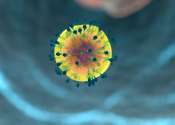Grafting is a horticultural technique whereby tissues from one plant are inserted into those of another so that the two sets of vascular tissues may join together. This vascular joining is called inosculation. The technique is most commonly used in asexual propagation of commercially grown plants for the horticultural and agricultural trades.
In most cases, one plant is selected for its roots and this is called the stock or rootstock. The other plant is selected for its stems, leaves, flowers, or fruits and is called the scion. The scion contains the desired genes to be duplicated in future production by the stock/scion plant.
In stem grafting, a common grafting method, a shoot of a selected, desired plant cultivar is grafted onto the stock of another type. In another common form called bud grafting, a dormant side bud is grafted onto the stem of another stock plant, and when it has inosculated successfully, it is encouraged to grow by pruning off the stem of the stock plant just above the newly grafted bud.
For successful grafting to take place, the vascular cambium tissues of the stock and scion plants must be placed in contact with each other. Both tissues must be kept alive until the graft has 'taken', usually a period of a few weeks. Successful grafting only requires that a vascular connection take place between the grafted tissues. Joints formed by grafting are not as strong as naturally formed joints, so a physical weak point often still occurs at the graft, because only the newly formed tissues inosculate with each other. The existing structural tissue (or wood) of the stock plant does not fuse.







